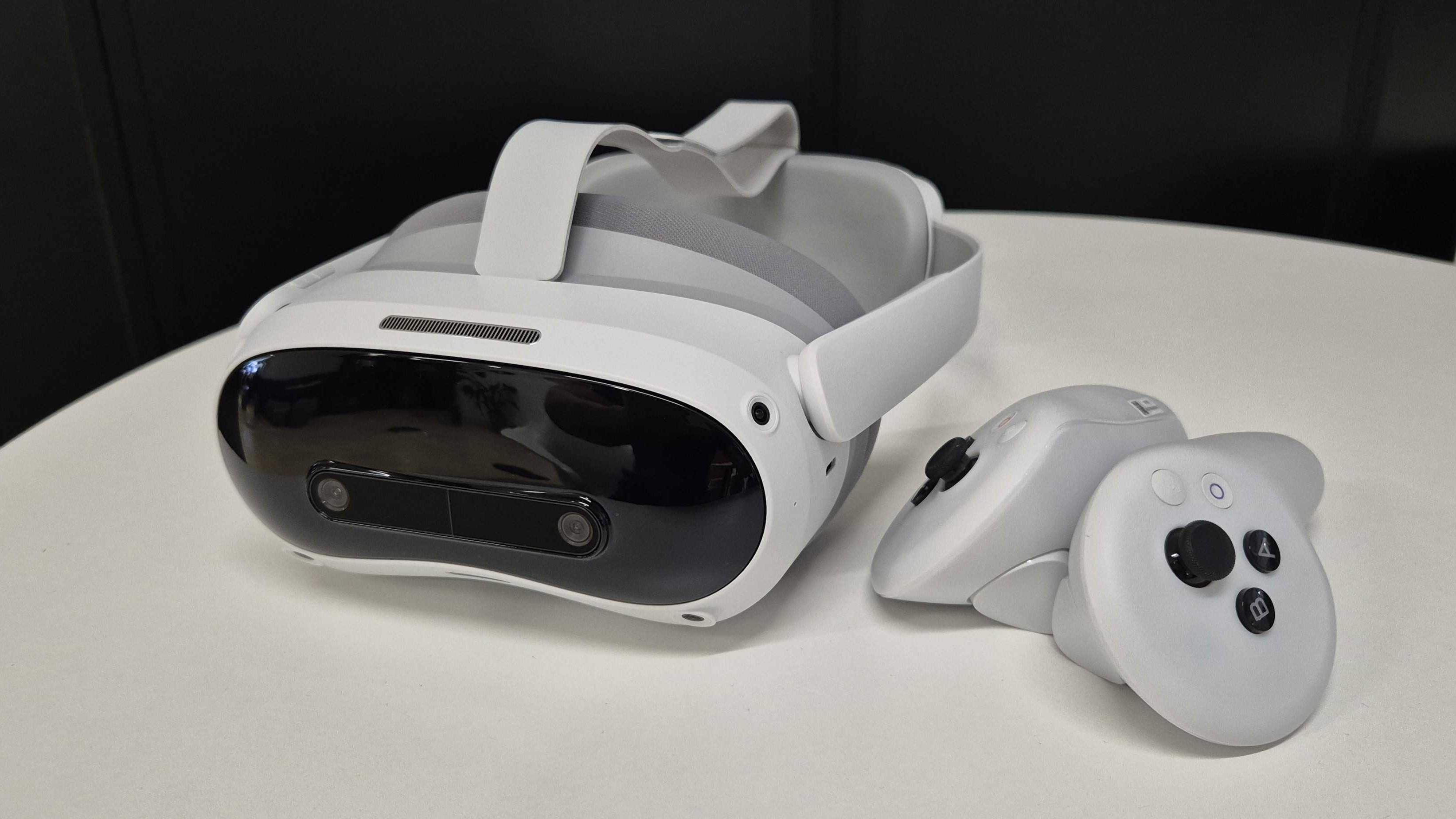
Pico 4 Ultra: Two minute review
The Pico 4 Ultra is giving me serious deja vu, and it’s not entirely the good kind.
That’s because its launch is extremely reminiscent of its predecessor; the base Pico 4. A Meta Quest VR headset is the dominant force in the budget/mid range market (then the Meta Quest 2, now the Meta Quest 3), and Pico is launching a device with better specs at an only marginally higher price.
In this instance, the Pico 4 Ultra will net you the Qualcomm Snapdragon XR2 Gen 2 chipset, 256GB of storage, and 12GB of RAM for £529 (around $695 / AU$1025). Meanwhile, the Meta Quest 3 ($499.99 / £479.99 / AU$799.99) only boasts 128GB of storage and 8GB of RAM with the same chipset.
But despite that additional oomph, the Pico 4 Ultra (like the Pico 4 before it) is let down by a lack of software with which to demonstrate its hardware superiority.
With Meta picking up more and more hard-hitting exclusives that you can’t play on Pico systems – including entries in major gaming franchises like Assassin’s Creed and the Batman Arkham series – the severe lack of return fire from Pico is disappointing. Couple that with Meta’s superb OS support and optimizations which the Pico operating system isn’t matching (at least right now) and it’s clear the Pico 4 Ultra isn’t winning in every area – and software-wise the fight isn’t even close.
The Pico 4 Ultra does, however, have a few unique features that could entice you and software developers to pay it some respect.
The first is its spatial footage capture. While it is inconvenient and something of a useless novelty in practice, if a few OS updates can bring some quality improvements this tool could be a fun one for recording memories or creating an experimental stereoscopic film (if you’re willing to put in the effort) without needing to buy an iPhone 15 Pro or Apple Vision Pro.
More importantly it has Meta Connect, a free Virtual Desktop alternative that allows you to connect to your PC wirelessly or use a compatible USB-C cable for productivity and PCVR gaming. In my testing it worked very well and seems a little more feature rich and reliable than Meta’s free Air Link.
Last but by no means least are the Pico 4 Ultra’s standout Motion Trackers. Annoyingly, you have to pay extra for them, but these foot trackers bring a great level of immersion to compatible apps for only £79 (around $100 / AU$150) for a pair – or a lot less if you pick up the preorder bundle or a different deal that I’m sure we’ll see during future sales events like Black Friday. These alone could be the best reason to pick up the Pico 4 Ultra.
Pico 4 Ultra: Specs
Pico 4 Ultra review: Price and Availability
The Pico 4 Ultra has only one model (the specs are listed above, but the notable stats are 12GB of RAM and 256GB of storage) and it goes on sale in the UK on September 20 for £529 (around $695 / AU$1025). No Australia or US launch has yet been announced.
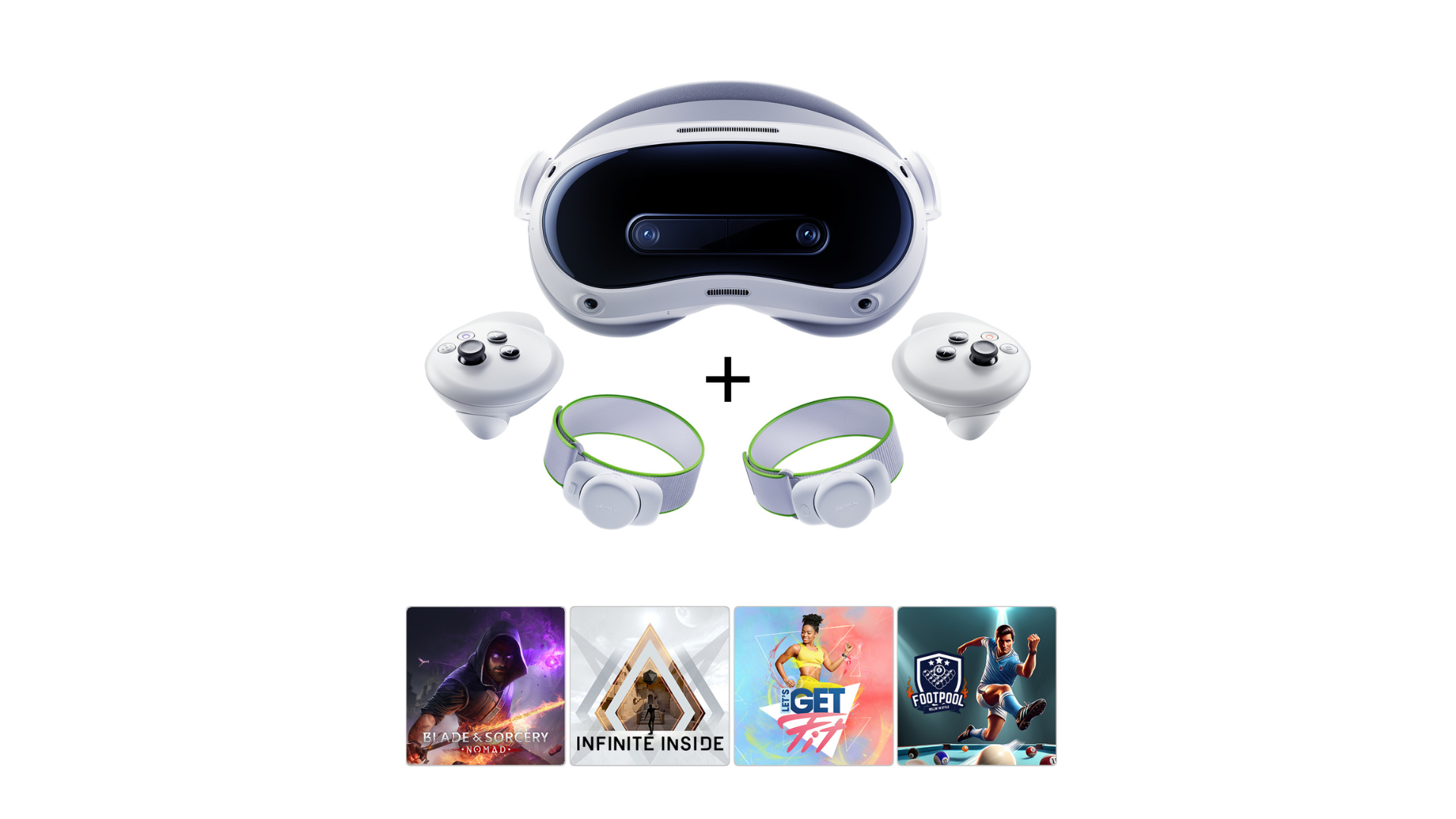
Preorders go live on September 6 and if you preorder the Ultra you’ll get a few free goodies; namely two free motion trackers (more on those in the Features section) as well as four games:
- Blade & Sorcery: Nomad
- Infinite Inside
- Let’s Get Fit VR
- FootPool
The lack of a truly global launch schedule isn’t unheard of for Pico – the original Pico 4 still isn’t available in the US – but it’s always a surprise to see Pico’s headsets dodge a major market, especially this time when the Ultra boasts such impressive internals. Yes, it’s a little pricier than a Meta Quest 3 ($499.99 / £479.99 / AU$799.99) but offers an additional 4GB of RAM and 128GB of storage which is an upgrade that could entice a lot of VR users; that is, if they weren’t locked out because the Pico 4 Ultra is unavailable in their part of the world.
- Value score: 4/5
Pico 4 Ultra review: Performance
- Every VR game and app runs smoothly
- Nothing feels like it needs 12GB of RAM
The Pico 4 Ultra boasts some fantastic hardware upgrades over its predecessor, which help it deliver a stronger performance in VR and MR. The principal upgrades are to its chipset with the Ultra relying on Qualcomm’s Snapdragon XR2 Gen 2 chipset (instead of the Gen 1 like the regular Pico 4) and 12GB of RAM (up from 8GB).
When testing the headset with a good mixture of games – Infinite Inside, Arizona Sunshine 2, All-In-One Sports VR, and Angry Birds VR – everything ran smoothly and looked good on the new device.
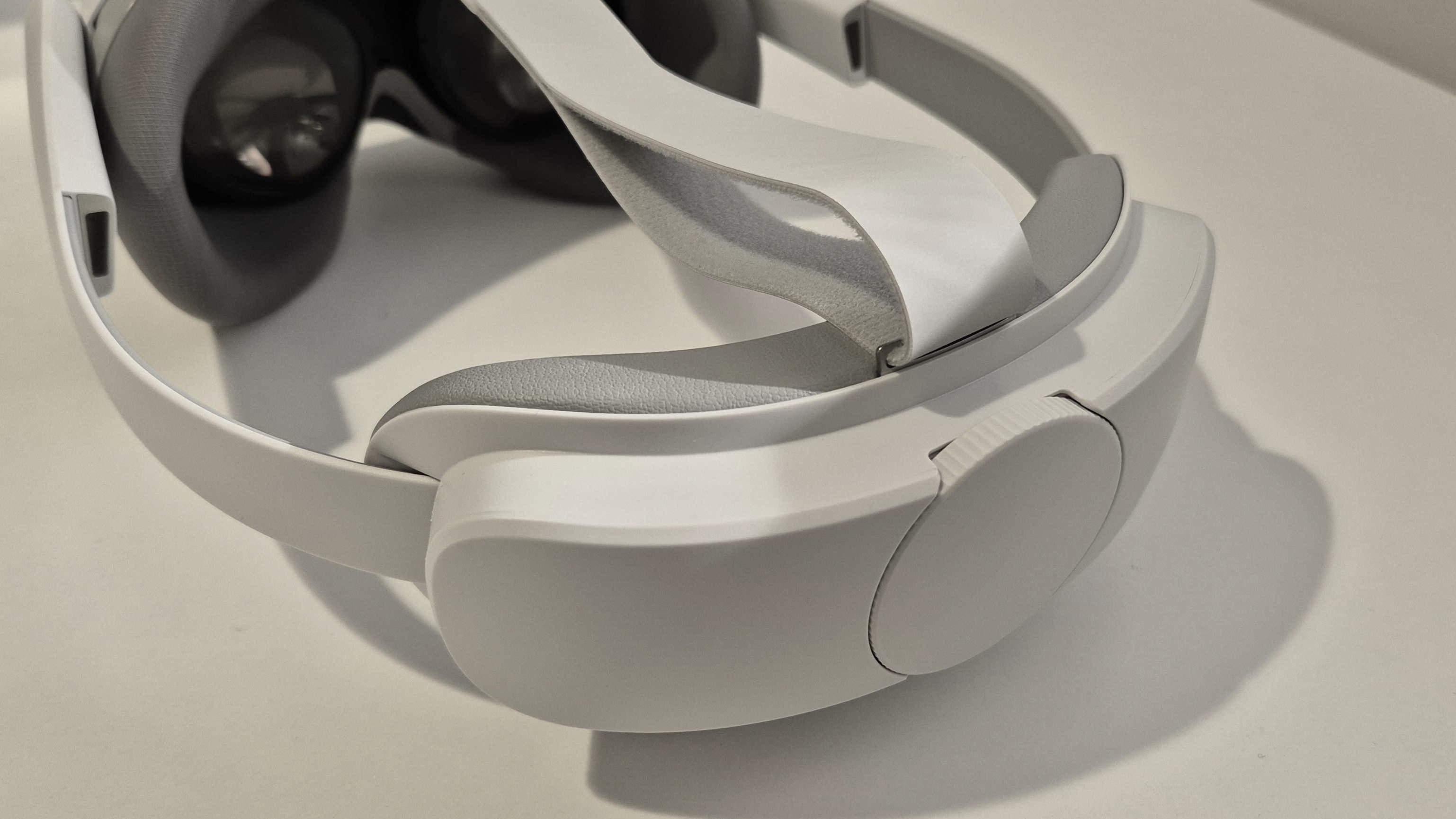
There were no hiccups in mixed reality either. Infinite Inside jumps between MR and VR while Angry Birds VR offers a dedicated MR mode for all of its levels. Both titles ran really well in this blended real-and-virtual setting – even when large chain reactions in Angry Birds sent pigs and many blocks that formerly made up their structures flying in different directions.
Now it’s officially announced, with any luck we should see some next-gen upgrades make their way to Pico 4 Ultra games and apps too – just like we saw with Quest 3 titles when Meta’s Quest line made the jump to the XR 2 Gen 2.
My only concern so far is I feel I’ve yet to experience anything that pushes the Pico 4 Ultra in a way which warrants that extra 4GB of RAM over other mid-range VR headsets with an XR2 Gen 2 chipset which only have 8GB (i.e. the Quest 3). Games and apps on those rival systems also run really well, and if Pico is asking us to pay more than its rivals charge because of the Ultra’s improvements, I’d like to see some really concrete reasons why that higher RAM and price is worthwhile.
Hopefully, some made for Pico 4 Ultra software will highlight how necessary the upgrades are, though we’ll have to wait and see what’s announced. For now we can at least enjoy the very solid mid-range headset Pico has delivered.
- Performance score: 5/5
Pico 4 Ultra review: Design
- Counterbalanced design is appreciated for comfort
- No silicon facial interface in the box
The Pico 4 Ultra (unsurprisingly) takes plenty of design cues from the base Pico 4; so much so you might assume they’re the same device at a glance. The Ultra is almost the same weight (580g instead of 586g), features more prominent mixed-reality sensors, and its controllers have lost their icon spiral tracking ring – in favor of the Quest 3 handsets’ tracking ring-less design.
However, you still get a VR gadget clad in a light gray plastic casing, with an adjustable plastic head strap that creates a counterbalanced design – as the device’s battery is housed at the back of the strap (so the battery sits at the back of your head) to offset the weight of the display and other components that are sitting on your face.
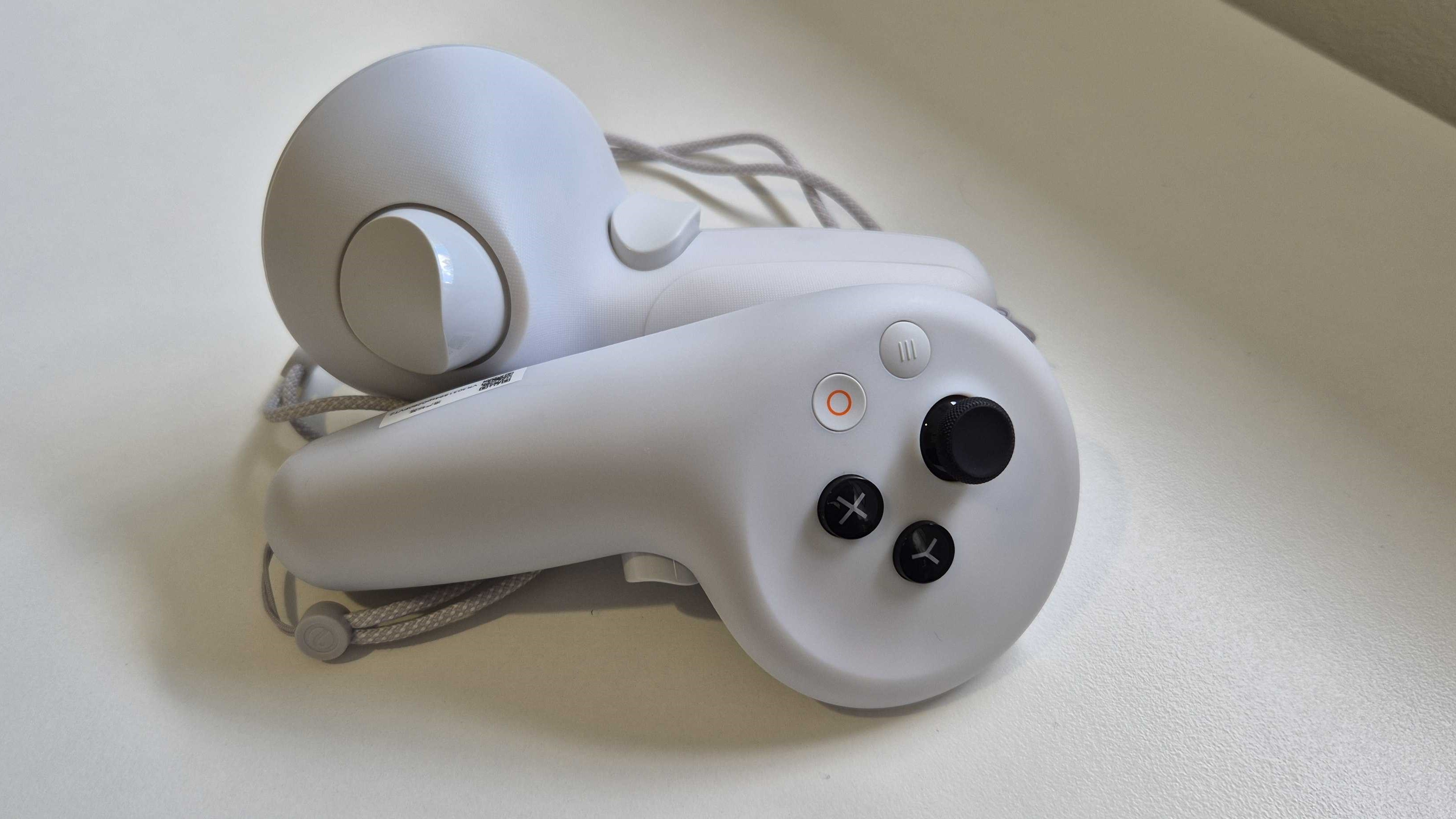
While this certainly aided the Pico 4 Ultra’s overall comfort, the headset was let down by its facial interface and rigid head strap cushion that left me wanting more in terms of support and fit. As a result, the headset didn’t feel leaps and bounds ahead of its non-counterbalanced headset counterparts. I’d go as far to say it was merely on par which was a shame.
I’m also disappointed that Pico – much like other headset makers – refuses to give you a silicon face cushion in the box. Fabric cushions get sweaty even if you don’t plan to play fitness apps meaning they’re generally gross to share with others, and cleaning fabric interfaces is a real pain. Silicon facial interfaces should be standard, not an additional purchase. At least it comes with a spacer attachment so you can make room for your prescription specs without needing to buy bespoke lenses (*cough* Apple Vision Pro *cough*).
The last negative aspect – though one I’m more torn on – is a fan that blows inside the headset while you’re wearing it to prevent the lenses fogging. While this can be handy I often found the breeze annoying as it kept blowing in my eyes causing them to feel extra dry. After a while you get a bit used to it, but the same feature was present in the Pico 4 and online forums suggest it’s one of those things people either love or hate. I’m more in the hate camp, but it comes down to personal preference.
Otherwise, the Pico 4 Ultra is fairly standard. It boasts USB-C charging and a familiar control layout on its handsets – save for two additional menu buttons meaning that the left controller has a dedicated button for the main Pico menu and another for the in-game pause menu, while the right controller has the same main Pico menu button and a dedicated screenshot button (which comes in handy for capturing impromptu clips).
Last but not least, the Pico 4 Ultra boasts continuous interpupillary distance (IPD) adjustment from 58-72mm. IPD adjustments are essential for ensuring the VR headset’s lenses are spaced the correct distance apart for your eyes to avoid blurriness, and a continuous adjustment setup allows for a higher degree of personalization compared to the three or four pre-set distances offered by some models (i.e. the Meta Quest 2).
- Design score: 4/5
Pico 4 Ultra review: Software
- Many great VR and MR games and apps
- Pico lacks meaningful exclusives
Coming into this review my main concern for the Pico 4 Ultra was its software. It might have the best specs we’ve ever seen on a mid-range standalone VR headset but without software to take advantage of this performance there’d be no point buying one.
I’m therefore pleased to report that the Pico 4 Ultra’s software library is good, bordering on great.
Navigating the virtual store is more of a pain then it should be – a cleaner layout and better app curation would go a long way here – but using the search bar to look up my favorite titles (Walkabout Mini Golf, The Last Clockwinder, Painting VR, and Pistol Whip to name a few) I found almost everything I was looking for. Best of all, the titles were all as content-packed and feature-complete as their counterparts on other platforms (something that hasn’t always been true for the Pico 4 system).
My only concern is that the Pico 4 Ultra is lacking in notable exclusives beyond its TikTok VR app. I know, I know, exclusive software is a contentious subject and I agree that overall they’re a bad deal for consumers. But under its belt the Meta Quest 3 (the Pico 4 Ultra’s main rival) has some massive hitters which Pico can’t currently compete with – we’re talking Beat Saber, Resident Evil 4 VR, Assassin's Creed Nexus, Asgard’s Wrath 2, Batman: Arkham Shadow, Xbox Cloud Gaming, and soon (ironically because it was originally announced as a Pico 4 exclusive) Just Dance VR, among others.

Some major upcoming titles like Just Dance VR and Alien: Rogue Incursion (which is also due out on the PSVR 2) could get Pico 4 Ultra release dates after the headset’s launch now that the device isn’t a secret, but Pico really needs to start swinging with some major games and apps you can’t find anywhere else. Until then there’s a clear winner in terms of the headset that’ll give you the most complete VR software experience, and it isn’t Pico.
What’s more, cross-platform titles will have to play to the lowest common denominator. That means they won’t be optimized for the Pico 4 Ultra’s 12GB of RAM; they'll also be designed with headsets in mind that only have 6GB or 8GB of RAM. This means you won’t get the most out of the extra specs you’re paying for unless the app creators devote extra time to Ultra-exclusive upgrades (which there’s no guarantee they will).
At least you can connect the Pico 4 Ultra to a PC to play SteamVR games, helping to expand its library further. You do so using the Pico Connect app which facilitates both wired and wireless experiences in much the same way as the third-party Virtual Desktop app. I tried the wireless version for some SteamVR games and found it ran pretty well, though your experience will depend on your home Wi-Fi speed – so you may find a wired connection is more stable.
My only critique is that when using Pico Connect for productivity apps like Google Docs I didn’t have a virtual keyboard. Using a real one in mixed reality is fine, but the option of a floating keyboard would have been appreciated.
I also found the Pico 4 Ultra’s operating system to be fairly clean. It’s very similar to Meta’s HorizonOS – likely because both are built on Android – so transitioning to it was simple enough, and I expect VR newcomers would be able to navigate fairly easily too. It does noticeably lack some of HorizonOS optimizations and smoothness at times, but Pico could address this in future updates.
- Software score: 3.5/5
Pico 4 Ultra review: Features
- Motion Trackers are impressive
- Spatial image camera seems pointless
As for features, the one you’ll all want to know about is the Pico 4 Ultra’s mixed-reality performance. Again the simple descriptor I’d go for is ‘it’s good’. For mixed reality the Pico 4 Ultra boasts two 32MP cameras, and a depth sensor – a step up on the base model’s single 16MP lens and no depth sensor setup. The end result is a vibrant passthrough image with less (but not quite zero) distortion than what we’ve seen from Pico before – at the fringes I did notice the passthrough feed shifting unrealistically at times.
Though it’s far from lifelike, there’s the same graininess you’ll find from other mid-range devices like the Meta Quest 3 – graininess which you’ll also see in the footage recorded by the Pico 4 Ultra’s new spatial camera.
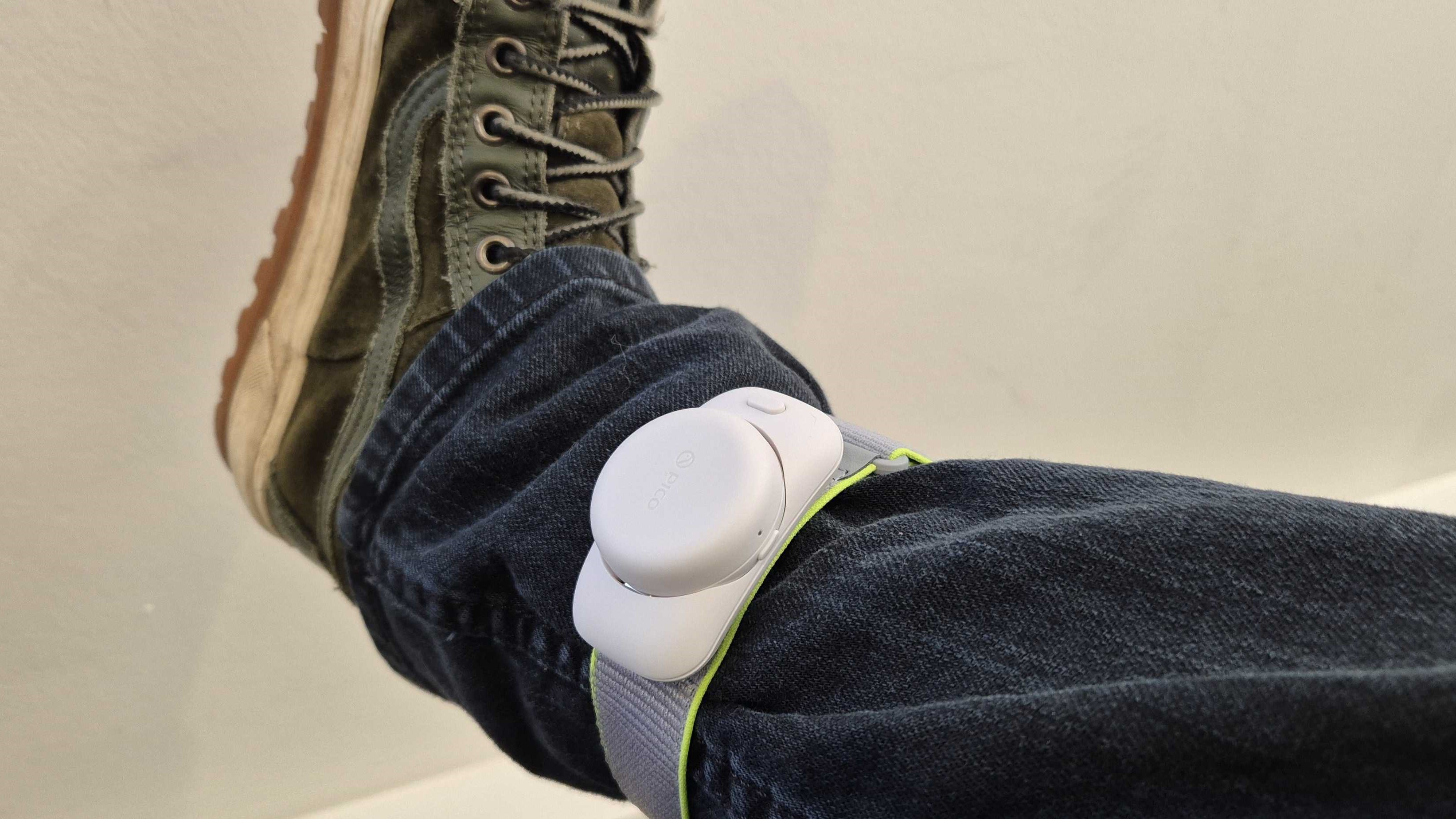
That’s right, just like the Apple Vision Pro you can use the headset to record spatial video that you can watch later. It’s interesting, sure, but far from useful. Someone on Reddit or X will post a video of them carrying their Pico 4 Ultra around to capture moments in spatial video or as spatial photos, but 99.99% of people won’t. Instead they’ll do exactly what I did – take a picture of their office / their living room / another space in their home, say “huh, that’s neat” when they see the stereoscopic image, and promptly never use it again.
I think spatial content capture is better handled by phones or accessories like the Xreal Beam Pro as these are devices you can reasonably carry with you to capture moments you’d like to remember and relive – and the quality would be higher too.
Finally, let's talk about the Motion Trackers, easily the best of the Pico 4 Ultra’s accessories.
When I strapped them to my ankles I expected the trackers would pick up general leg motion but might struggle with specifics – for example, it wouldn’t be able to tell the difference between me raising my foot with my knee bent, and raising my foot keeping my leg straight. I was very wrong.
I tried a bunch of maneuvers trying to trick the ankle bracelets, and the little VR avatar the app showed me mimicked my poses perfectly.
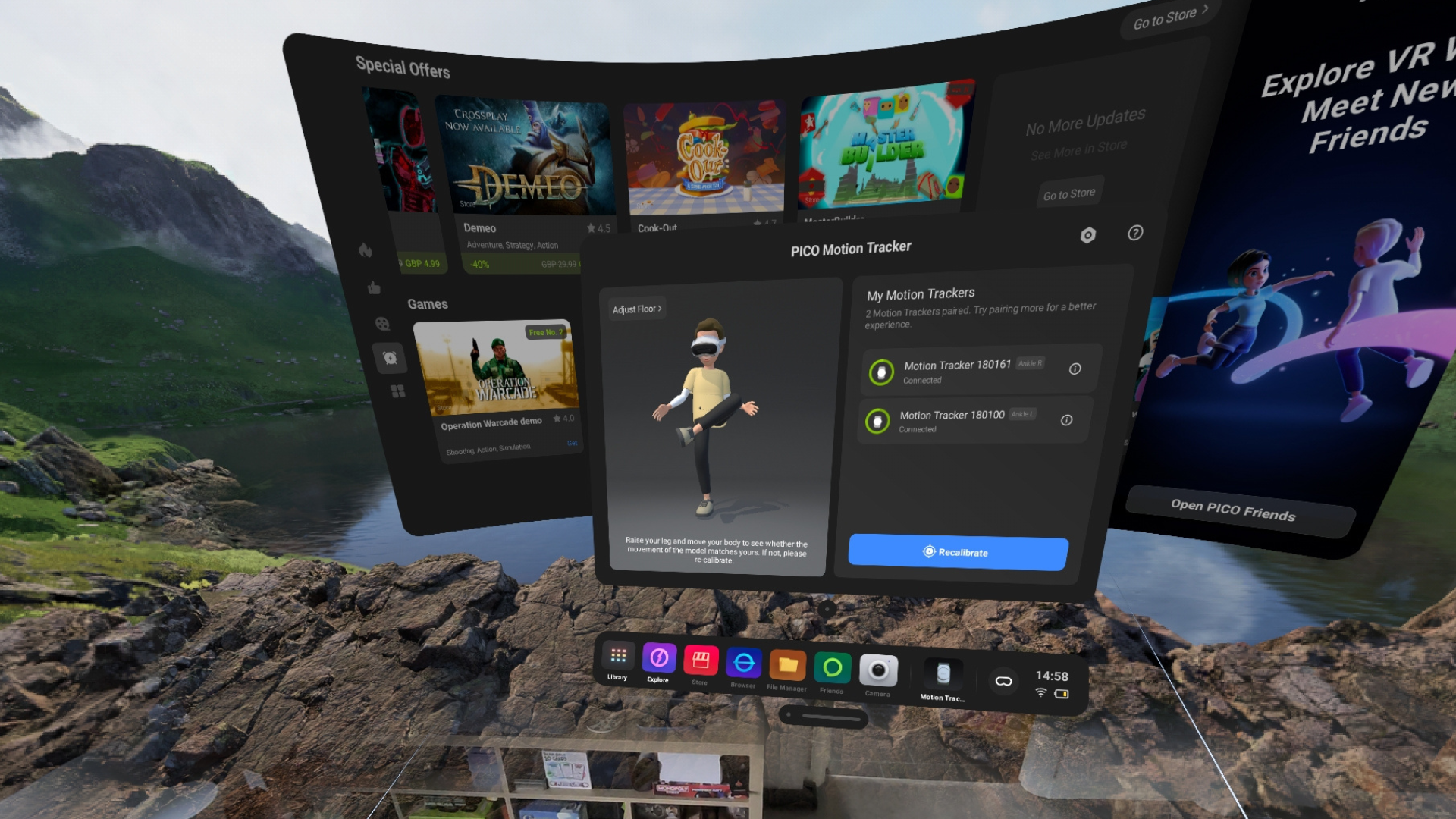
They were also super easy to set up and calibrate, with the only (minor) inconvenience being that I had to remember to roll my jeans up so that the trackers were exposed and not hidden behind my clothing (as I write this I realize I could have instead put them over the top of jeans, but regardless it was the most minor of minor inconveniences anyway).
Obviously, the thing to note is that unless you’ve picked them up as part of the preorder bundle – or another deal that comes later during Black Friday or otherwise – the Motion Trackers cost £79 for a pair. What’s more, they only work with a few titles – Pico says “20+” for standalone Pico 4 Ultra games as well as any motion tracker enabled SteamVR experiences.
If you play these titles regularly I think the trackers can add a fair amount of immersion – actually getting to kick a virtual football or feel like the headset was properly tracking my full body movement was a blast – though I’d recommend trying to get them as part of a discounted bundle if you can (or only picking them up if your digital library is well stocked with compatible experiences).
- Features score: 4.5/5







